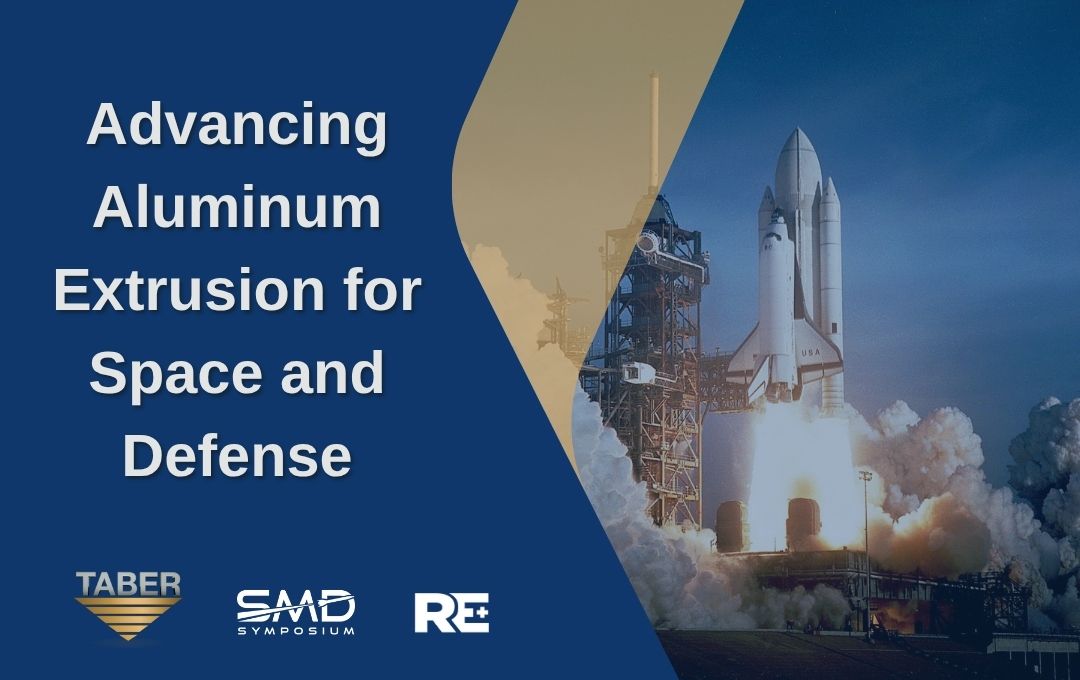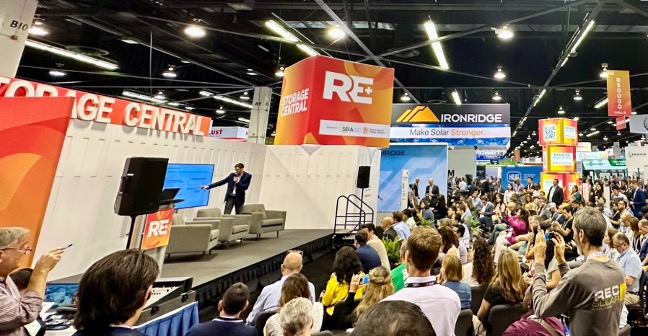
Image Attributions: SMD – https://smdsymposium.org/; RE+ Show – https://www.re-plus.com/
Key Takeaways:
- Challenges in aerospace and defense are increasing. Mounting issues with weight, structural integrity, and assembly complexity are faced when multi-part aluminum builds are used.
- Single-piece aluminum extrusions offer clear advantages. Welds and fasteners are eliminated, resulting in improved strength, reduced weight, simplified supply chains, and enhanced thermal management.
- Advanced press technology enables better designs. With the large-profile press line launching in 2026, Taber’s engineers are empowered to create stronger, lighter, mission-ready components with fewer constraints.
Advances in aluminum extrusion for space and defense are being driven by design and manufacturing changes rather than incremental tweaks. Lighter, stronger, and more complex systems are now required. At events like the Space & Missile Defense Symposium and RE+ Show, the shift toward large, monolithic extrusions has been highlighted. Mission-critical demands make weight and structural integrity non-negotiable. Additionally, new large profile extrusion presses are being recognized as key to enabling previously impossible designs.
Key Conversations from the 2025 SMD Symposium and RE+ Show
The exhibition floors at the SMD Symposium and RE+ Show are often seen as predictors of the industry’s direction. In 2025, a clear message was conveyed: aerospace and defense design is being reshaped by component consolidation.
For decades, complex structures were assembled from many small parts, which caused sourcing difficulties, lengthy assembly times, and joint failures. Now, large-profile aluminum extrusions are being used to replace full assemblies with single components.
The benefits are clear:
- Greater strength and stiffness than multi-part builds
- Welds, bolts, and rivets are eliminated
- Labor, inspection points, and assembly costs are reduced
- Timelines are shortened, and reliability is improved in mission-critical systems

Image Attribution: https://www.accure.net/events/re-2025
The Strategic Imperative of Large Profile Aluminum Extrusions for Space and Defense
A decisive shift toward large-profile components has been driven by benefits that address core aerospace and defense challenges. When single large extrusions are used instead of multiple smaller parts, several advantages are realized.
- Enhanced structural integrity is achieved. Every weld, bolt, or rivet previously introduced potential stress points and failures. These weaknesses are removed by monolithic extrusions, with loads distributed evenly. Consequently, performance is improved in environments of extreme vibration, shock, and temperature changes.
- Thermal management is improved. Heat is dissipated more effectively and evenly across single-piece extrusions. This capability is recognized as critical in electronics enclosures and in the thermal regulation of sensitive space-based equipment.
- Weight and assembly costs are reduced. Fasteners, brackets, and overlapping materials added complexity and weight. By consolidating components, overall weight is lowered, touch labor and inspection points are minimized, and assembly time is shortened. Payload capacity and fuel efficiency are thereby enhanced.
- Supply chains are simplified. Dozens of smaller parts previously created logistical challenges. When a single, complex aluminum extrusion is sourced from a qualified domestic manufacturer, procurement is streamlined, inventory is reduced, and supply chain resilience is strengthened—an outcome prioritized by U.S. Department of Defense programs in space and missile defense.
Bridging the Gap: From Design Concept to Mission-Ready Component
Until recently, demand for large, complex extrusions was greater than manufacturing capabilities. Full potential was enabled only when advanced metallurgical knowledge of specialized aluminum alloys and capable machinery were applied. Consequently, the development of cutting-edge manufacturing technology has been considered essential.
High-strength, precision components are now being produced. Large billets are formed into intricate profiles under immense, uniform pressure, while tight tolerances are maintained along the entire length. This capability is regarded as foundational for next-generation airframes, military vehicles, and naval components.
A seamless pipeline is being established. From digital design to finished, mission-ready parts, defense-grade aluminum extrusion manufacturers are enabling a fully integrated process.
Partnering with Taber, a Leader in Advanced Aluminum Extrusion
Taber Extrusions continues to support aerospace and defense. For decades, critical components have been delivered, and with cutting-edge machinery with a 16 inch container launching in 2026, evolving needs are being addressed once again.
Key challenges are being directly tackled. Fewer design constraints are provided for engineers, stronger and lighter structures are enabled, and a direct path from design to deployment is created.
Through cutting-edge extrusion technology and one of the largest profile aluminum press, Taber is empowering defense and aerospace engineers to bring ambitious designs to life — with the required strength, precision, and reliability.

Take the Next Step
The industry is moving quickly. For OEMs and engineers, the time to begin design collaboration is now. By engaging an extrusion partner early in the design phase, you can optimize your final component for performance, manufacturability, and mission success.
Contact Taber Extrusions or request a quote below to begin your consultation and leverage the next generation of aluminum extrusion for space and defense.
